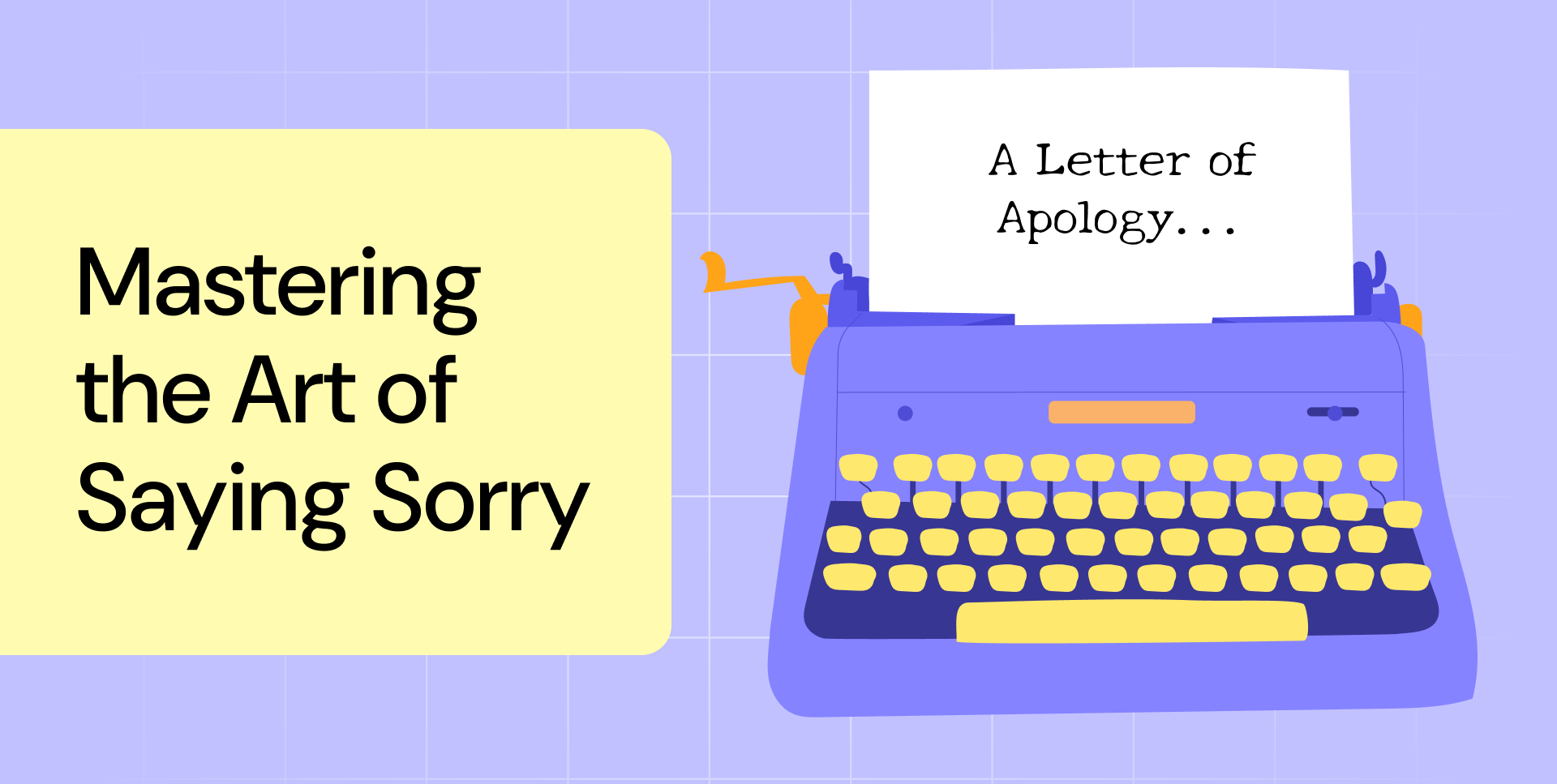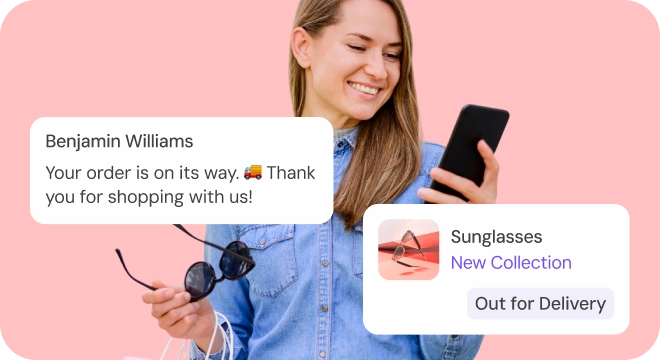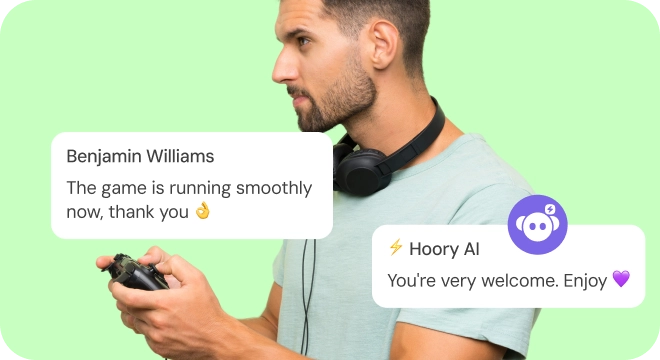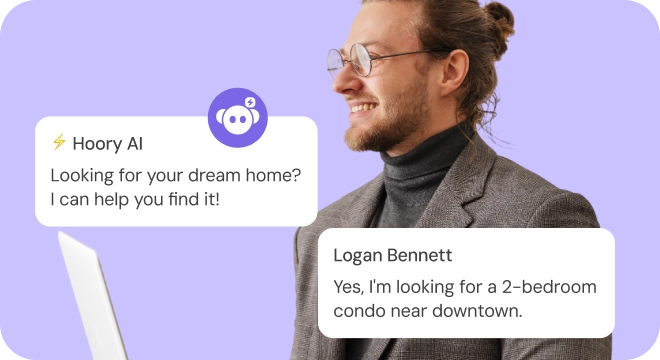The Art of Saying Sorry: How to Apologize in Customer Service?
• Customer Support
• FastBank

Ever heard of the "Sorry, not sorry" phenomenon? It's when people say they're sorry but don't really mean it. If you've ever been on the receiving end of a half-hearted apology, you know it can feel like salt in a wound rather than a soothing remedy. Now, imagine being the customer service agent who has to navigate this delicate situation with finesse.
In the world of customer service, an apology isn't just about uttering the words "I'm sorry." It's an art form that requires timing, sincerity, and a sprinkle of empathy. Picture this: a customer's day has taken a wrong turn due to a mishap, and they're boiling in frustration. Your job isn't just to fix the issue; it's transforming their frustration into relief and maybe even a smile.
In this article, we'll delve into the nuances of crafting the perfect apology, exploring how to avoid the pitfalls of generic "sorry" and delivering genuine apologies that resonate.
The Importance and Psychological Impact of Apologies
Apologies hold significant power in human interactions, especially in customer service, where emotions often run high. The act of apologizing goes beyond mere words; it's a bridge that reconnects the relationship between a company and its customers after a disruption. A sincere apology can prevent the loss of a customer and even turn a negative user experience into a positive one.
From a psychological perspective, apologies fulfill a deep-seated human need for acknowledgment. When customers feel wronged, they often seek validation of their emotions and the experience they've encountered. An apology provides this validation by acknowledging the mistake and its impact. This acknowledgment can reduce frustration, anger, and disappointment, which are common in service-related issues.
When to Apologize in Customer Service
Knowing when to apologize in customer service is just as important as knowing how to apologize. Timing is everything; a well-placed apology can diffuse tension, mend relationships, and turn a dissatisfied customer into a loyal advocate.
1. When Expectations Aren't Met
One of the most common situations that call for an apology is when customer expectations haven't been met. Whether it's a delayed delivery, a product that doesn't match its description or a service that falls short of promises, it is crucial to acknowledge the gap between what was expected and what was delivered. Customers want to know that their disappointment is understood, and a timely apology can be the first step in making things right.
2. When a Customer Feels Frustrated or Disrespected
Even when the issue isn't directly your fault, if a customer feels frustrated, dismissed, or disrespected during their interaction with your company, an apology is crucial. A simple acknowledgment of their feelings - like, "I'm sorry you're had this experience" - can go a long way in rebuilding bonds and showing empathy.
3. When There's a Service Disruption
Mistakes happen - they're a part of any business. Unexpected outages, system failures, or service disruptions can quickly lead to customer dissatisfaction. In these cases, when the fault lies with your company, it's important to apologize as soon as possible, even if you’re still working on a solution. Keeping customers in the loop with a sincere apology and regular updates can help mitigate the impact of the disruption on your relationship with them.
4. When Feedback Indicates a Problem
If customers consistently provide feedback about a recurring issue, it's a clear sign that something needs to be addressed. Apologizing in response to customer feedback - whether it's about product quality, service efficiency, or communication, shows that you're listening and taking their concerns seriously. This proactive apology can prevent issues from escalating and demonstrate your commitment to continuous improvement.
Apology Etiquette: Do's and Don'ts
Mastering the art of apology in customer service involves more than just saying "I'm sorry." It's about delivering that apology with the right balance of empathy, sincerity, and tact. Let's dive into the do's and don'ts of apology attitude to ensure your apologies hit the mark every time.
Do's
-
Do Take Responsibility: The first step in any good apology is owning up to the mistake. Customers appreciate when a company takes responsibility without making excuses. A simple "We made a mistake, and we're sorry for the inconvenience" goes a long way in showing that you're accountable and ready to make things right.
-
Do Empathize with the Customer: Empathy is key. Show the customer that you genuinely understand their frustration or disappointment. Phrases like, "I see how this situation has been frustrating for you” or “I understand why you’re upset" help to humanize the interaction and make the customer feel heard.
-
Do Pay Attention to Your Language and Tone: An apology that sounds robotic or insincere can do more harm than good, leaving customers feeling unvalued or even more frustrated. Avoid overly formal or legalistic phrases, which can come off as detached or uncaring. Instead, user conversational language that acknowledges the customer's feelings and clearly states what went wrong. A warm, understanding tone can turn a negative experience into a moment of connection.
-
Do Offer a Solution: An apology without a solution is only half an apology. After apologizing, immediately follow up with how you plan to fix the issue. Whether it's offering a refund, a replacement, or simply a timeline for resolution, providing a clear path forward demonstrates a commitment to resolving the problem.
-
Do Follow Up: After the initial apology and resolution, don’t forget to follow up with the customer. A quick message to check if everything has been sorted out reinforces your sincerity and leaves a lasting positive impression. It shows that you care about the customer’s experience beyond just rectifying the mistake.
Don'ts
-
Don't Shift the Blame: Avoid the temptation to deflect responsibility onto others, whether it's another department, a third-party vendor, or even the customer themselves. Saying, "It's not your fault, but…" undermines the apology and can make the customer feel dismissed rather than valued.
-
Don't Over-Apologize: While it's important to apologize, overdoing it can have the opposite effect. Repeated apologies can come across as insincere or even patronizing. Apologize once or twice, then focus on the solution. The customer is likely more interested in how you'll fix the issue than in hearing "sorry" multiple times.
-
Don't Use Vague Language: A vague apology can leave the customer unsatisfied and unsure if you truly understand the issue. Avoid generic phrases like, "We apologize for any inconvenience caused." Instead, be specific about what went wrong and how to plan to address it. This clarity reassures the customer that you're taking their concerns seriously.
-
Don't Forget the Human Touch: In today's digital age, it's easy to rely on automated responses or scripted apologies. However, nothing beats a personal touch. Whether you communicate via email, phone, or chat, ensure your apology feels genuine and personalized. Customers can easily sense when an apology is insincere or robotic, and it can erode trust rather than rebuild it.
Apologies Done Right: Real-Life Examples
To truly grasp the impact of a well-executed apology, it's helpful to see how others have navigated their own missteps. In this section, we'll examine some standout examples of companies that turned their apologies into powerful demonstrations of customer commitment.
KFC
In 2018, the famous fast food giant KFC had a chicken shortage in the UK. When hundreds of their locations had to close due to a poultry supply problem, the company didn't just issue a bland statement - they reimagined their bucket. Instead of "KFC," the bucket read "FCK." The apology ad humorously acknowledged the blunder with the line, "A chicken restaurant without any chicken. It's not ideal," This clever blend of humility and humor turned an embarrassing situation into a viral moment, even earning the company an award for its creativity.
Sony's PlayStation Network
When Sony's PlayStation Network was hacked in 2011, millions of users were left without access to their accounts for 23 days. The company had to act fast to regain trust. Instead of a standard corporate apology, Sony offered what became known as the "Welcome Back" package. Users were given free games, free subscriptions, and plenty of extras as a goodwill gesture. The apology wasn't just about saying "sorry"; it was about making things right in a way that felt personal and appreciated, ultimately helping to smooth over one of the biggest security breaches in gaming history.
Apple
In 2013, Apple faced backlash over its maps app, which was riddled with errors and inaccuracies, leading to some pretty significant inconveniences for users. Instead of ignoring the criticism, then-CEO Tim Cook issued a rare public apology, admitting the flaws and even going so far as to recommend Bing, MapQuest and even Google as alternatives that customers could use while Apple worked on fixing the issues. This level of honesty and willingness to put customer needs first, even at the expense of their own product, earned respect for Apple and showed commitment to delivering quality experiences.
Domino's Pizza
In 2009, Domino's Pizza faced a public relations nightmare when two employees posted a video of them preparing food in unsanitary conditions. The incident could have easily destroyed the brand, but Domino's took a bold approach. CEO Patrick Doyle appeared in a direct and candid YouTube video, apologizing for the incident and outlining the steps Domino's would take to ensure it never happened again. What made this apology stand out was Doyle's transparency and the company's subsequent "Pizza Turnaround" campaign, where they invited customers to critique their pizzas and used the feedback to overhaul their recipes. This commitment to change, coupled with apology, helped Domino's reinvent itself and emerge stronger than before.
JetBlue
One of the most creative apologies came from JetBlue on Valentine's Day of 2007 after a major snowstorm left passengers stranded on the runway for hours, causing a public relations crisis. CEO David Neeleman didn't just apologize but introduced the "Customer Bill of Rights," which promised compensation for delays and cancellations, setting a new standard for the industry. By transforming an apology into a tangible set of protections for customers, JetBlue not only regained trust but also differentiated itself from competitors as an airline that genuinely cared about the passenger experience.
Conclusion
As the saying goes, "An apology is the superglue of life - it can repair just about anything." In customer service, a well-crafted apology does more than just patch things up; it shows customers that you genuinely care. It's an opportunity to transform a negative experience into a lasting positive impression. Addressing issues with honesty, empathy, and a commitment to making things right makes your apology the foundation for stronger, more loyal customer relationships.
So, the next time you need to apologize, remember that how you say it can make all the difference—and if you need a refresher, this guide will always be here to help.

























